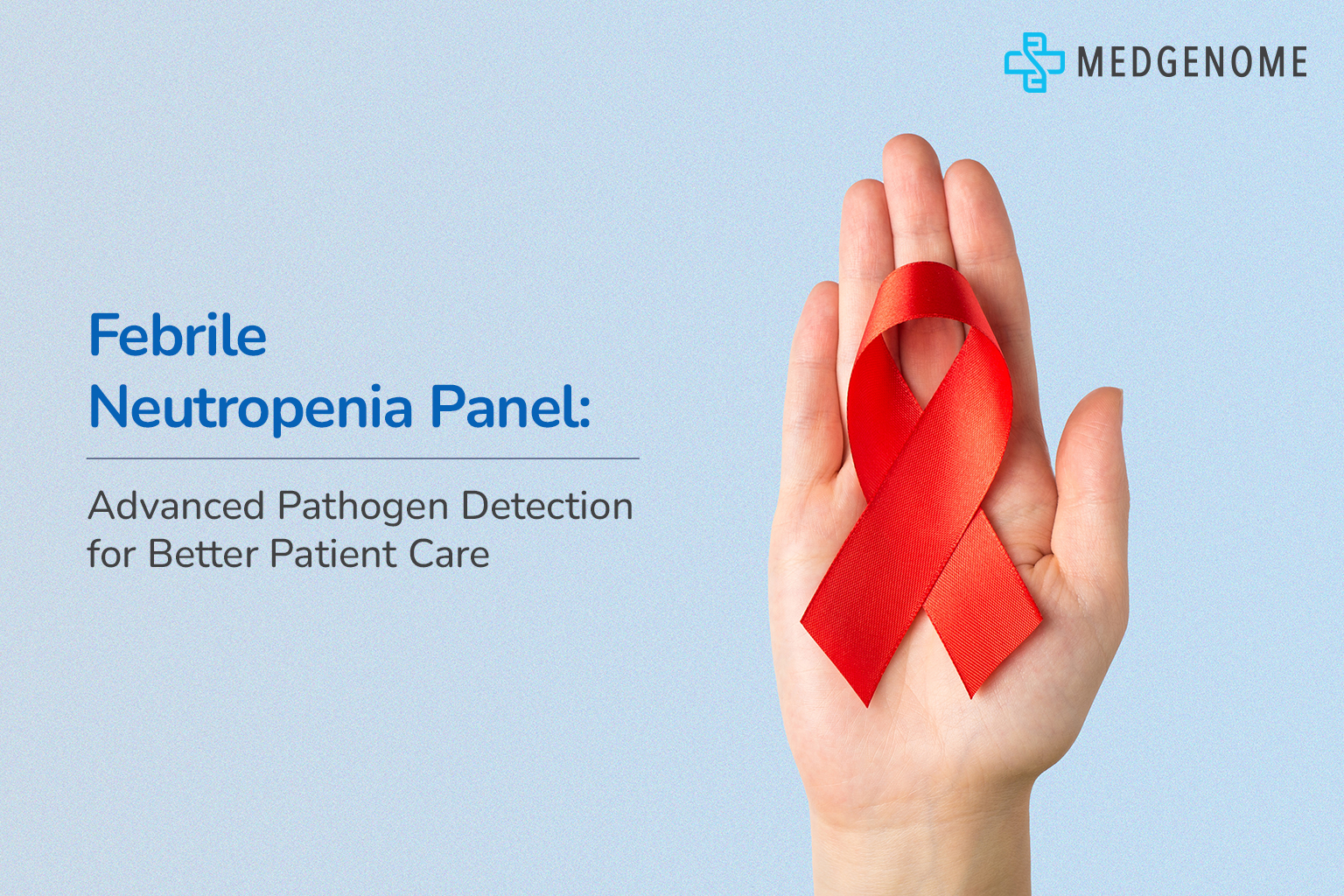Febrile neutropenia is a serious complication in cancer patients, especially those undergoing chemotherapy. It happens when a patient has a fever from an infection due to low levels of neutrophils – the white blood cells that help fight infections. Detecting the pathogens responsible for infections in febrile neutropenic patients is crucial for timely treatment and better outcomes. The febrile neutropenia panel has brought advanced pathogen detection techniques to transform patient care by improving accuracy and speed.
Understanding Febrile Neutropenia Panel
A febrile neutropenia panel is a Multiplex RT-PCR based comprehensive test to identify pathogens in immunocompromised patients. These panels are specifically designed to detect bacteria, viruses, and fungi that may cause febrile neutropenia in cancer patients.
In the past, febrile neutropenia diagnosis was a challenge due to limited pathogen detection techniques. Traditional methods often took days to yield results, which delayed appropriate treatment. With the introduction of febrile neutropenia panels, it has become possible to identify infections more quickly and accurately, allowing healthcare providers to initiate targeted treatment faster and ensure better outcomes.
Advanced Pathogen Detection in Febrile Neutropenia
Advanced pathogen detection is the cornerstone of managing febrile neutropenia in cancer patients. Unlike conventional testing, modern febrile neutropenia panels use molecular methods, such as PCR (Polymerase Chain Reaction), which can detect even the most minor amounts of pathogen DNA or RNA in the blood. This level of precision is essential for identifying infections at an early stage, even when symptoms may not be fully developed.
Since these panels can detect multiple pathogens simultaneously, they have greatly improved the efficiency of febrile neutropenia diagnosis. Early identification of the infectious agent enables prompt, targeted therapy, which is critical for the survival of cancer patients with compromised immune systems.
The Clinical Importance of Early Pathogen Detection
Early detection of pathogens is crucial in febrile neutropenia management because delays in identifying and treating infections can lead to life-threatening sepsis. By providing rapid and reliable results, febrile neutropenia panels help clinicians decide on the appropriate antibiotic or antiviral therapy without unnecessary delays.
Prompt treatment not only saves lives but also minimises the need for broad-spectrum antibiotics, which can contribute to antibiotic resistance. Therefore, early and accurate febrile neutropenia diagnosis is critical to improving patient outcomes and optimising healthcare resources.
Impact of Advanced Febrile Neutropenia Panels on Patient Care
The introduction of advanced febrile neutropenia panels has significantly impacted how febrile neutropenia is managed in clinical settings. The benefits include:
- Faster Diagnosis: Reduced time to identify pathogens allows for quicker initiation of treatment.
- Targeted Treatment: Instead of using empirical therapy, clinicians can prescribe treatments tailored to the specific pathogen.
- Reduced Hospital Stays: Early and effective treatment helps in faster recovery, reducing the need for prolonged hospital stays.
- Better Prognosis: Patients who receive early and appropriate care are more likely to recover from infections without severe complications.
Advancements in Pathogen Detection Technology
Pathogen detection has witnessed several technological advancements in recent years, leading to more reliable and faster results. Modern febrile neutropenia panels now utilise techniques such as next-generation sequencing (NGS), a genetic testing method to detect a broader range of pathogens with higher accuracy. By incorporating the latest advancements in pathogen detection, healthcare providers can offer better diagnostic accuracy. With accurate early diagnosis, they can create effective treatment strategies for cancer patients suffering from febrile neutropenia. These technologies are not only transforming febrile neutropenia management but are also setting new standards for infection detection in immunocompromised patients.
Role of the Febrile Neutropenia Panel in Immunocompromised Patients
For patients undergoing chemotherapy or those with weakened immune systems, the febrile neutropenia panel is a crucial tool for infection management. Since these patients are more susceptible to developing life-threatening infections, timely identifying pathogens is essential for effective treatment. The febrile neutropenia panel has become integral to febrile neutropenia management, helping oncologists and infectious disease specialists provide optimal care at the earliest.
Conclusion
The febrile neutropenia panel has significantly improved infection management in cancer patients. Its advanced pathogen detection technology ensures quicker diagnosis and targeted treatment, reducing the risk of severe complications and enhancing patient care. As technology advances, these screening panels will continue to be vital in safeguarding the health of immunocompromised individuals.
To learn more about advanced febrile neutropenia panels, visit MedGenome’s comprehensive diagnostic solutions. Ensure timely and accurate pathogen detection for better health outcomes—explore our genetic counselling and testing options today.


 Enquire
Now
Enquire
Now